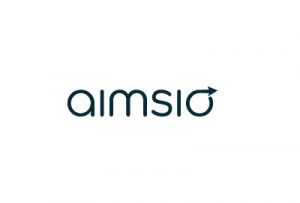Upstream oil and gas companies rely on data to shed light on what can’t be seen. Details about a formation, bit location, flow, composition — producers know just how valuable this information is and what it can contribute to future projects. However, without adding vendor data to the mix, part of the big picture is missing.
After oil prices plummeted in 2015, cost discipline became the dominant recovery theme for upstream oil and gas. As time went on without a full price rebound, E&P firms turned to Operational Excellence(OE) to find ways to regain strong profit margins without further squeezing inputs and investments.
What is OE?
“Operational excellence is the pursuit of world-class performance. It requires everyone from the boardroom to the front line to consistently make the most effective operational decisions based on an integrated view of operational reality [that takes into account] risk, cost and productivity.” – Institute for Operational Excellence
Early iterations of this management strategy were considered more of an ideology than a concrete, tactical approach with tangible results. However, advances in technology have provided the necessary tools to leverage OE principles into cost savings. Industry analysts Ernst & Young estimate that achieving OE could reduce costs by up to 43% and deliver savings over five years of up to $30 billion.
Producers are warming up to OE as well. A recent survey of oil, gas and petrochemical professionals found 92 percent of respondents said achieving OE was important to the success of their business.
How will upstream O&G achieve OE?
The survey went on to show that the industry is driven to OE primarily seeking cost efficiencies (63%), so efforts will be likely focused more on costs than production. An overwhelming majority (92%) of respondents identified technology is the key enabler for delivering sustainable operational excellence in upstream O&G and more than a third stated providing operations personnel with better, real-time information was a key driver. The logical and strategic choice for what information to share is vendor data.
A recent industry whitepaper outlined a solution that uses technology to share information to reduce costs. The report cited using cloud-based platforms to share real-time data between E&P firms and oil field supply companies (OFS) as a way to better manage costs and increase predictability of cash flows. Until recently, information had been shared manually or via time-consuming systems that were often riddled with compatibility issues. Thanks to advances in technology and specialized software development, using third-party cloud platforms now provides efficiency, functionality and security.
Vendor Data as an Asset
E&P companies already know the value of well data, sensor data, geological data, and environmental data: big data in oil and gas market is projected to be worth $10.93 bn USD by the end of 2026. While a recent market research report listed gaining operational effectiveness and potential for new insights as the main drivers for collecting data, the restraints include a shortage of talent and tools to capture and use data.
These drivers and restraints apply to vendor data, as well. Collecting vendor data provides insight and transparency, which leads to a better understanding of job costs and more accurate forecasting. In order to overcome the restraints, it’s important to choose the right data collection tools. Multiple vendors create the potential for multiple, disconnected data collection systems. In the past, this is where producers have run into issues that have the potential to nullify the benefits of collecting vendor data.
The key to leveraging vendor data is simplicity. Information should flow directly to your invoicing system without loss of detail or redundant data entry. Software platforms with increased functionality will also organize historical data into reports and help with asset management. This process is simple for your vendors, as well. By capturing material tickets and labour electronically in the field, service companies spend less time and administrative cost on billing.
Most importantly, capturing and sharing vendor data with a software platform provides real-time, accurate insights that can be immediately used for cost planning and forecasting. If you would like to know more about the role of the cloud in real-time data sharing, click here. Also, this piece on workflows can help navigate through new integrating new processes. To learn more about how Aimsio turns vendor data into an asset, click the link below.
Share This:





 CDN NEWS |
CDN NEWS |  US NEWS
US NEWS 

































